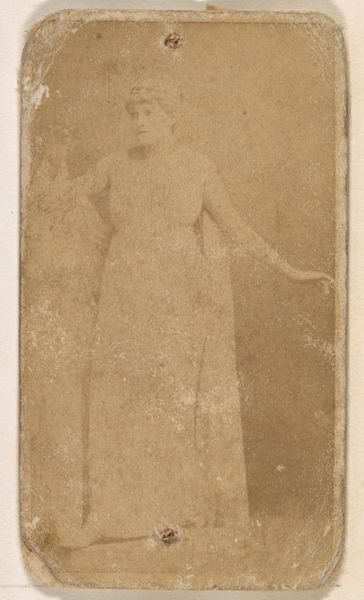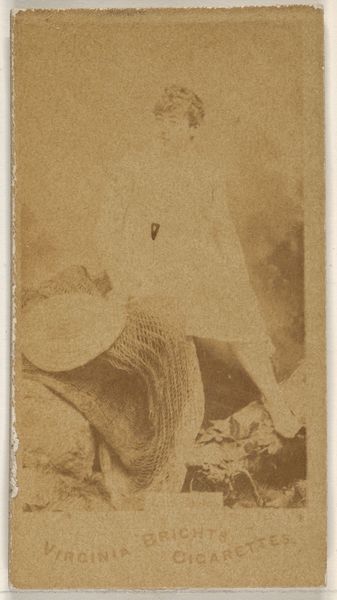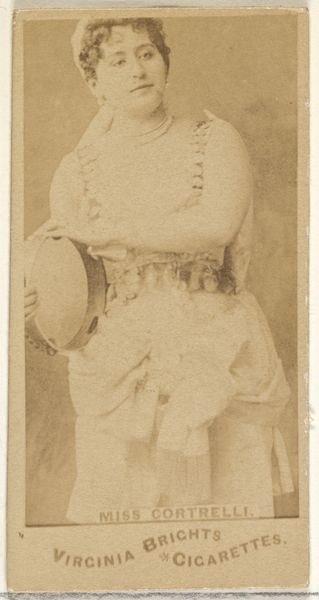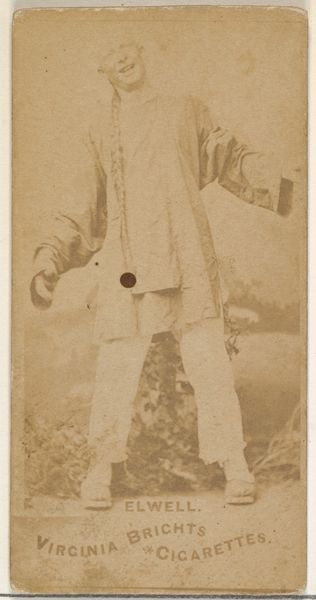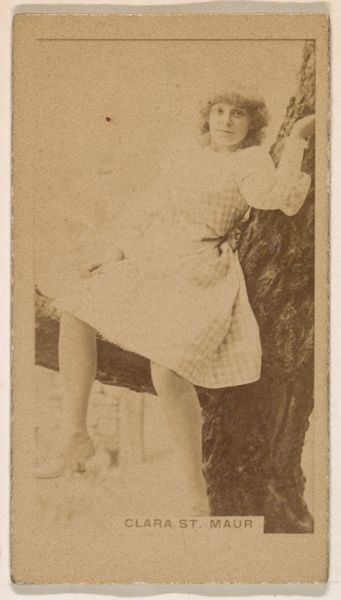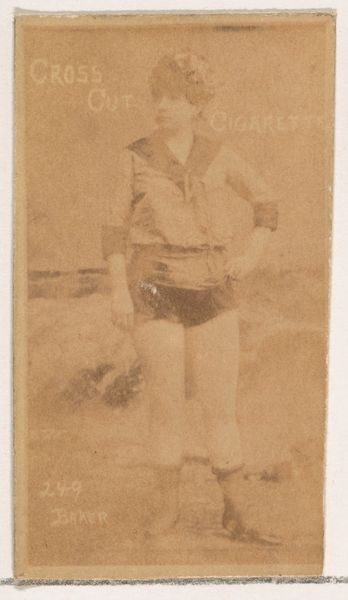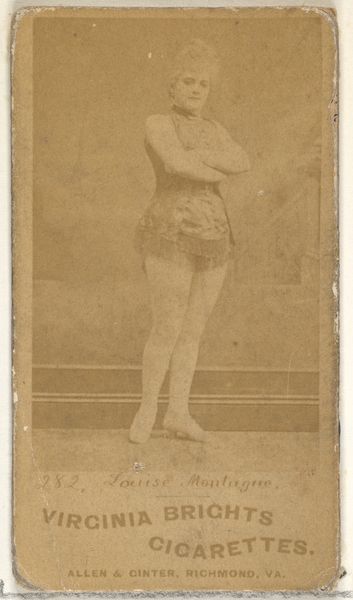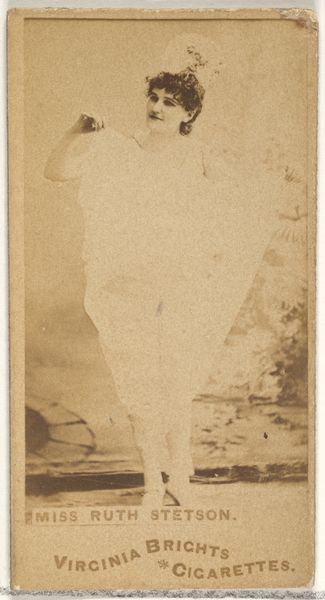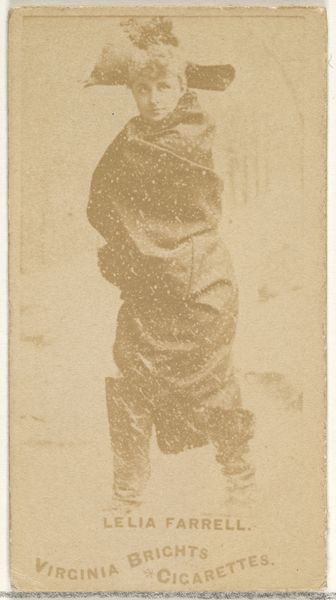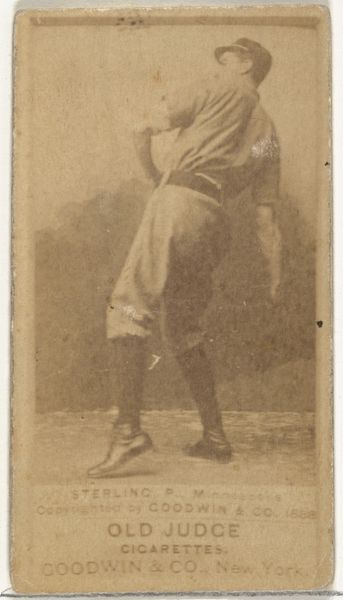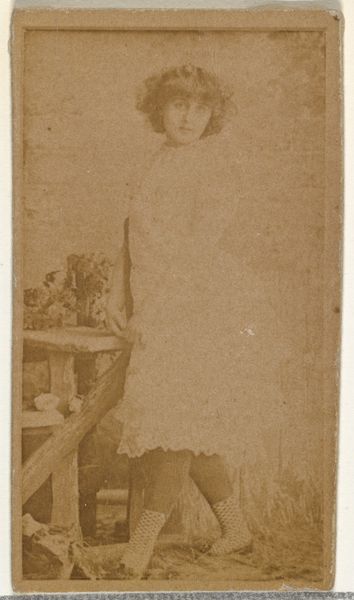
From the Actors and Actresses series (N45, Type 2) for Virginia Brights Cigarettes 1885 - 1891
0:00
0:00
drawing, print, photography
#
portrait
#
drawing
# print
#
photography
Dimensions: Sheet: 2 3/4 x 1 3/8 in. (7 x 3.5 cm)
Copyright: Public Domain
Curator: This tobacco card, part of Allen & Ginter’s "Actors and Actresses" series dating from 1885-1891, immediately evokes a sense of faded grandeur. Editor: The sepia tones really do give it that aged feeling. What intrigues me most, though, is that it exists because of a cigarette brand: Virginia Brights. How strange to think of artistic imagery acting as product endorsement! Curator: Exactly. These cards, made using photography and drawing and, of course, printmaking techniques, circulated during a time of increasing industrialization and emerging consumer culture. It reflects not just popular entertainment, but the machinery behind it, shaping fame as a saleable commodity. The actresses featured represented ideals of beauty and success, performing gender roles in the theater as well as offstage. Editor: I am especially drawn to how humble this type of media is. It comes from very industrial beginnings. You can almost imagine the factory floor where countless prints were cranked out. There is value to be found by observing that these cards went into cigarette packages that someone would buy to use to enjoy and then throw out. They’re remnants that allow us to analyze popular culture. Curator: Absolutely, there is a stark class contrast implicit in its existence: to make and market these cards, you need both industrial laborers and consumers with the means to indulge, momentarily binding the two together in this transient exchange. What power does the representation of these actresses, now rendered as collectibles, have to potentially obscure or highlight? Editor: Considering its placement as a mere cigarette insert, the object still retains its original intention. Even when isolated as we see it now, or blown up like we are viewing, we get to explore a window into a complex manufacturing process in order to understand a time period. Curator: Indeed. Analyzing images within such complex social networks provides fascinating insight into labor, capital, and representation. Editor: It prompts us to reflect on not only what we see, but how it was made, circulated, and consumed.
Comments
No comments
Be the first to comment and join the conversation on the ultimate creative platform.


